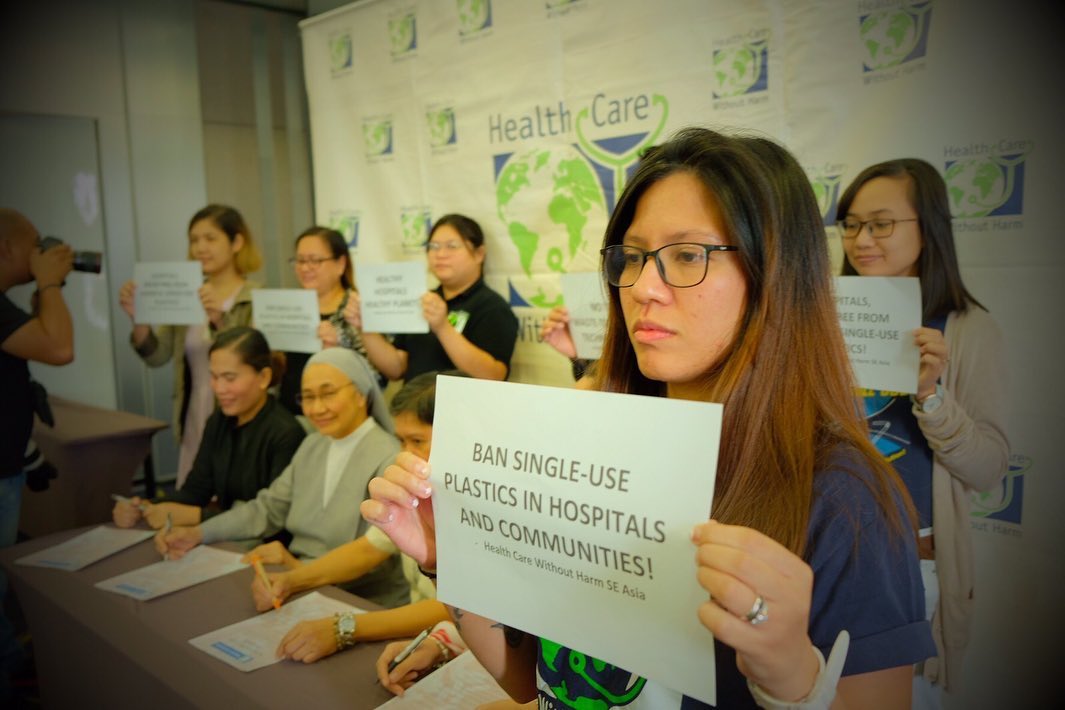In an aim to re-amplify the call to assess, reduce, and eliminate the use of harmful single-use plastics in healthcare, hospitals and medical institutions in the Philippines together with the bigger break free from plastic movement, pledge to uphold and promote sustainable waste management in order to protect the health of the planet and the people.
“As the only sector with healing as a mission, our hospitals and health organizations have an important leadership role to play in the bigger movement against plastics, because plastic pollution is also a public health issue,” Ramon San Pascual said; Executive Director of Health Care Without Harm (HCWH) Southeast Asia. He added that, “today, the hospitals where we conducted the first hospital waste and brand audits back in 2018, are already experiencing the impacts of the plastic reduction strategies we have recommended.”
For instance, during the Public Launch of the Break Free From Plastic Healthcare Network in Quezon City, pilot hospitals have shared their initial achievements like Alabang Medical Center where they have experienced reduction in infectious waste volume, and in single-use plastic bottles through installation of water fountains in hospital floors. St. Paul Hospital Cavite shared that they have stopped purchasing non-essential plastics by installing water stations in each hospital floor and providing brewed coffee instead of sachets. On the other hand, the St. Paul’s Hospital in Iloilo has engaged with their supplier in terms of the disposal of purchased goods, and lastly, Mary Johnston Hospital in Tondo, are talking to possible suppliers of glass IV bottles to replace the plastic ones.
San Pascual finally expressed that, “through this project launch and network building, more hospitals are being called to help in the banning of single-use plastics in the health facility and in the communities, to continue in pushing for the right policies and fighting against false solutions like waste-to-energy, and especially in setting an example for other institutions, work places, and even campuses.” ###



